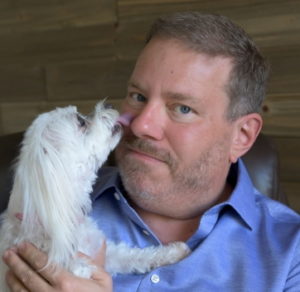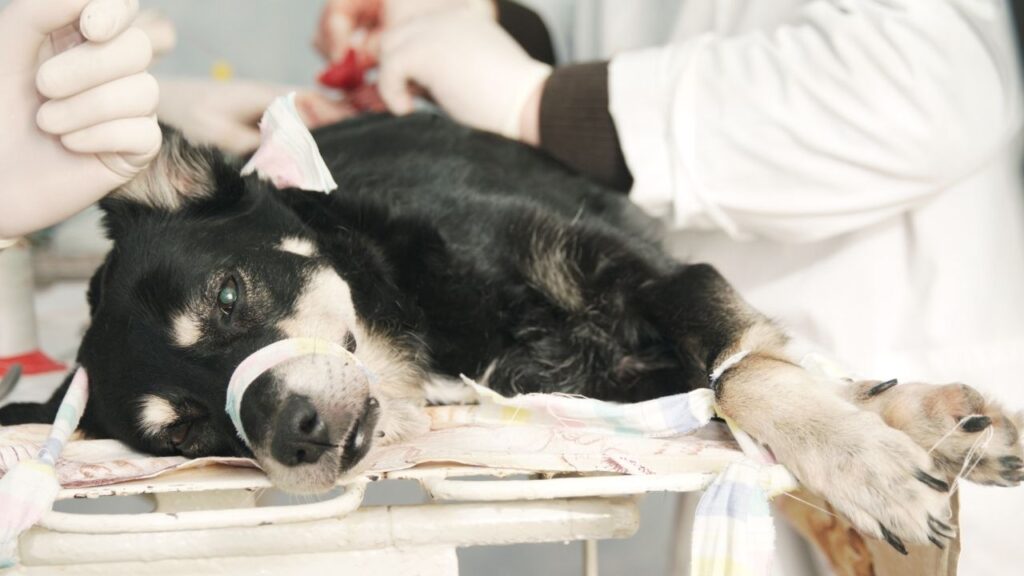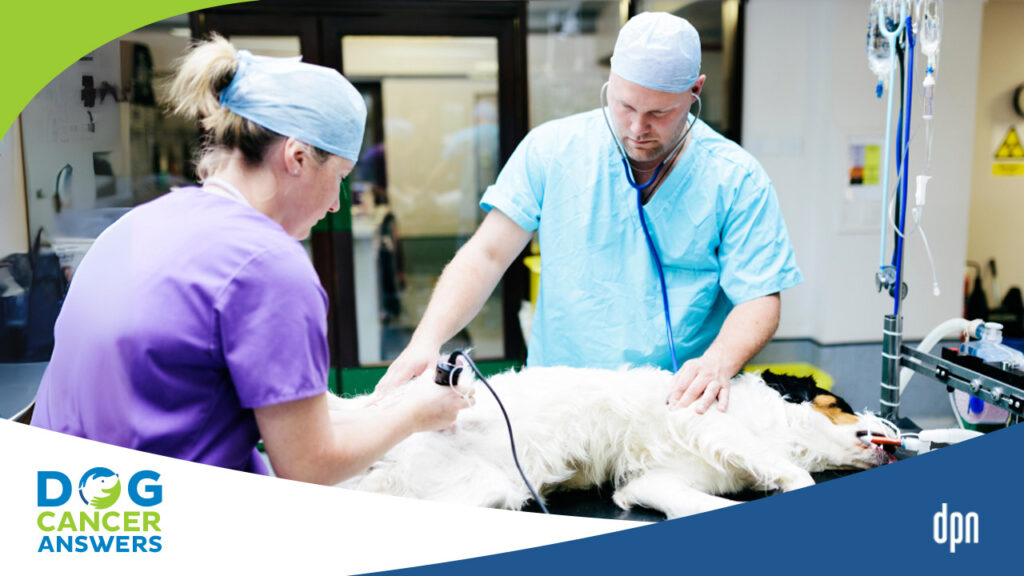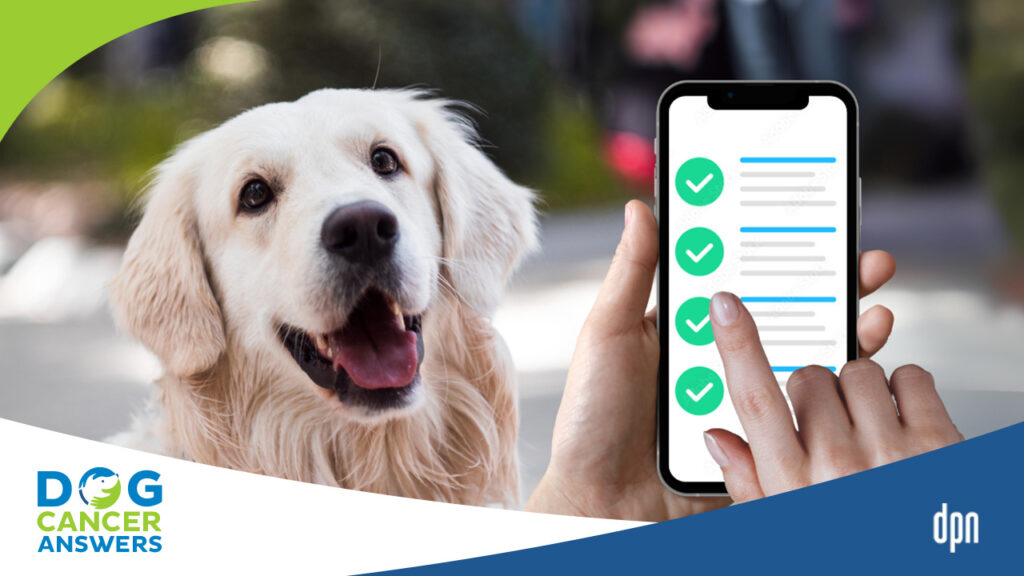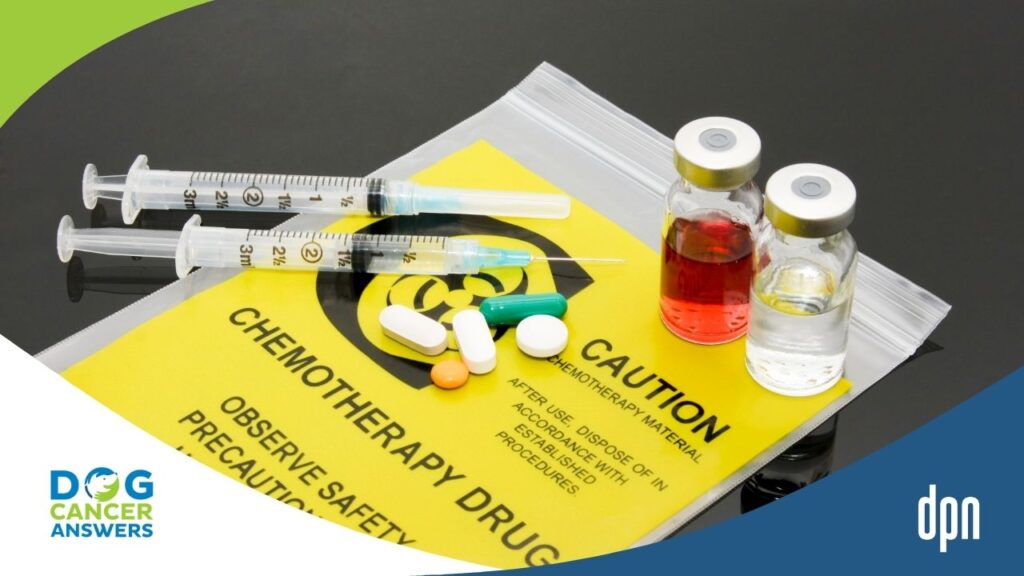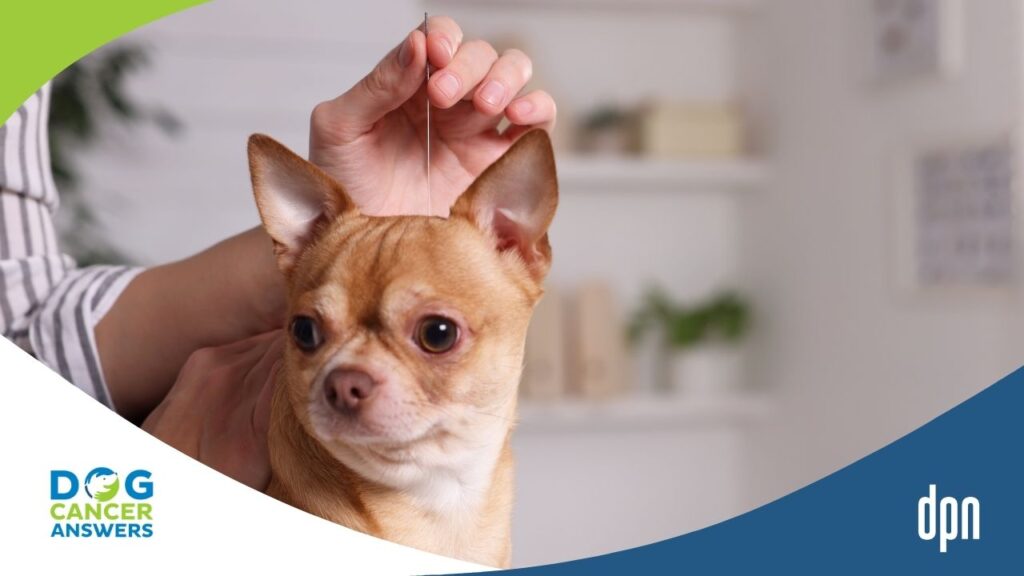EPISODE 252 | RELEASED August 5, 2024
Dog Surgery Recovery Guide for Dog Owners | Kate Basedow, LVT
It’s critical that you know how to care for your dog in the first days and weeks after surgery.
SHOW NOTES
Surgery is stressful, but after it’s over … it gets worse. You have a lot of things to do at home! Knowing what to expect and how to manage the healing and recovery process makes a difference. Join host James Jacobson and Kate Basedow, a seasoned veterinary technician, for an in-depth discussion of how to help your dog heal comfortably and quickly.
Key Points Covered:
- What to Expect Post-Surgery
- When to Expect Bathroom Habits to Return
- When and How Eating and Drinking Begins Again
- Incision Care: What’s Normal, and What’s Not
- Why Being the Bad Guy and Enforcing Activity Restrictions Is Critical
- Complications to Watch for: Bruising and Seromas
- Suture Removal!
- Medications Your Dog Might Need While They Heal
- Resuming Normal Activities Safely
Join our Facebook support group at https://www.dogcancer.com/support
Your Voice Matters!
If you have a question for our team, or if you want to share your own hopeful dog cancer story, we want to hear from you! Go to https://www.dogcancer.com/ask to submit your question or story, or call our Listener Line at +1 808-868-3200 to leave a question.
[00:00:00] >> Molly Jacobson: Want to know how to care for your dog who’s just home from surgery? Listen in to learn how to navigate the critical first days and the next two weeks.
[00:00:11] >> Announcer: Welcome to Dog Cancer Answers, where we help you help your dog with cancer.
[00:00:17] >> Molly Jacobson: Hello listener, I’m Molly Jacobson, Editor in Chief at DogCancer.com, where over 40 veterinarians, veterinary oncologists, cancer researchers, and science writers like me pull together to bring you better information today, so you have no regrets tomorrow. This episode rounds out our three part series on surgery for dogs. In the last two episodes, we spoke about first, how to prepare your dog for surgery, and then how to handle the day of surgery. That leaves us with the final question, how to care for your dog in the days and weeks after surgery.
To get you insider advice, our host James Jacobson, founder of Dog Podcast Network, is joined by Kate Basedow, a seasoned licensed veterinary technician. And now to James Jacobson and Kate Basedow.
[00:01:06] >> James Jacobson: Hello, Kate.
[00:01:07] >> Molly Jacobson: Hello. I’m happy to be here.
[00:01:09] >> James Jacobson: So this is part of this three part series. We did before surgery, the day of surgery, and now this is after surgery. What are some of the tips that you’d recommend, uh, people follow to make sure that the surgery that you just went through is going to have the best outcome now that it’s over.
[00:01:29] >> Kate Basedow: So the post op care is usually the hardest part for most owners. We’re all so worried about the surgery itself and the anesthesia that all of our planning and thoughts about it stop at the day of the surgery. And so then you’re handed back your dog and someone’s like, Oh, gosh, what now?
[00:01:49] >> James Jacobson: Right.
[00:01:50] >> Kate Basedow: So, expect that your dog is going to be groggy and tired when they’re handed back to you after surgery. Even though it’s been a couple hours since they were woken up after the procedure, they’re still working some of those drugs out of their system, and it may take a couple days to be completely back to normal, especially if your dog is older or has a lot of health problems that compromise their system.
Some pain medications can also cause grogginess, especially if your dog is getting a narcotic. So usually the veterinary staff will give you a heads up on any side effects there. Gabapentin is also one that can have some varying responses. Some dogs are flat out on Gabapentin and totally out of it. Others don’t care at all.
One of my mom’s dogs had Gabapentin at one point and him, you would have thought he was dying. He was totally out of it. When we discontinued the Gabapentin, he perked right back up. My dog was on Gabapentin after a surgery and she was bright and bushy tailed, no problems. So, if your dog is one of the ones that has the sedation effect from Gabapentin, usually they’ll work through it in a couple days, but that’s just something to keep in mind.
[00:03:05] >> James Jacobson: And this is stuff, like, that is impossible to really know ahead of time, right? I mean, this is not going to show up in the blood work.
[00:03:12] >> Kate Basedow: Yeah, exactly.
[00:03:13] >> James Jacobson: This is, like, in the DNA in terms of, yeah, this is how your dog specifically handles different proteins and enzymes and stuff from way over my head, uh, related to the ingredients in the anesthesia.
[00:03:27] >> Kate Basedow: Yeah, exactly.
[00:03:28] >> James Jacobson: What other tips you got for us, Kate?
[00:03:30] >> Kate Basedow: So, also expect that your dog may not pee or poop for a day or two. Usually they’ll urinate pretty quickly, the night after the surgery, definitely the next morning. Pooping might take a couple days. Anesthesia kind of makes them a little constipated. And depending on where the surgery was done and where the incision is, your dog might not be totally confident about positioning herself to defecate.
So it might be a couple days. Don’t panic. This is normal. If they haven’t pooped by day four or five after surgery, then I would call my veterinarian and address it.
[00:04:04] >> James Jacobson: That is such a good tip because I again learned the hard way. Hard way that yeah, it’s like you were oh my god. She’s not pooping. This must be like, oh my god They screwed up. So if you know what to go in expecting that maybe your dog will be a little constipated. Whew. You’ll feel a lot better. So if you dog hasn’t pooped in four days, five days, is that what you’re saying? That’s when you contact your vet.
[00:04:29] >> Kate Basedow: Yeah, and four or five days I’d be at least bringing it up to my veterinarian
[00:04:34] >> James Jacobson: Okay.
[00:04:34] >> Kate Basedow: And also remember that your dog missed a meal and didn’t have breakfast the day of the surgery, so there’s less in there. And usually, they’ll recommend just feeding a small meal the night after the surgery just so that you’re not hitting their GI tract with a ton of food after a weird day.
[00:04:52] >> James Jacobson: Well, let’s talk about food because I have experienced that my dogs, after surgery, were not all that interested in eating.
[00:05:00] >> Kate Basedow: And that’s pretty common, especially the night of the surgery, right after. They still didn’t totally feel great. And they’re like, what do you mean? I don’t want to eat. Um, so I wouldn’t be too alarmed if they don’t want to eat that same day. The next morning, they should be back to eating. If they’re still kind of like, eh, I don’t know. You can try a couple different things to entice them to eat.
Add a little warm water to the kibble if you feed dry food to both soften it and the warm water will help bring out the natural aromas in the food and the increased smell will encourage them to eat. You can also add a little bit of canned dog food in or low sodium chicken broth. If your dog eats canned food, warm it up a little bit in the microwave. Just don’t use a metal bowl. And make sure that it’s not too hot before giving it to your dog. Test it with your finger before giving it to them.
[00:05:53] >> James Jacobson: And I imagine if you do home cook for your dog, maybe try to find more delicious tasting things that are within his dog cancer diet.
[00:06:02] >> Kate Basedow: Yeah, exactly.
[00:06:02] >> James Jacobson: To tempt your dog back because your dog has just been through a heck of a journey. And so, yeah, not wanting to eat is understandable. So, uh, I guess don’t overdo it. This isn’t when you get the hot dogs and the cheeseburgers out, but you may need to coax your dog. And if your dog still continues to not eat, what do you do?
[00:06:21] >> Kate Basedow: If they’re still not eating by 36 hours after the surgery, I would definitely call and check in with my vet and they’ll probably ask you other questions about how your dog is doing, how their activity level is. They may end up prescribing an appetite stimulant. to try to encourage your dog to eat, or they might just say to give it another day, depending on your dog’s unique case.
[00:06:46] >> James Jacobson: Well, I will tell you, those appetite stimulants, you use the word Entyce, that’s one of the brands.
[00:06:50] >> Kate Basedow: Yeah.
[00:06:51] >> James Jacobson: Awfully, awfully effective. Like, if you just are totally at wit’s end, I think your vet has something for you. But hopefully your dog won’t be like my dog’s. What other tips do you have?
[00:07:01] >> Kate Basedow: So, expect that the incision may ooze a little bit. Clear and thin or bloody discharge isn’t anything to worry about. If there’s a lot of discharge or it ever starts to look thick in consistency like pus, that’s a concern and a potential sign of infection, or if it’s bleeding a lot.
If you have concerns about your dog’s incision, or if it’s still really oozy after four to five days, you can always take a picture and send it to your veterinarians, either to their email, or a lot of hospitals now have an office cell phone that you can send pictures to so that a staff member can look at it and either say, yep, that looks totally fine, or, eh, that looks a little funky, maybe bring them in, come in at such and such time and we’ll check it out more closely.
Other things that can happen with the incision, there is often bruising, especially on light colored dogs, and just like us, the bruise isn’t going to show up immediately, but it’ll show up a couple days after the surgery. So don’t panic if you suddenly see purplish bruising. That’s normal. Just means your dog has delicate skin. You can ice the area if your dog will let you, to help get any inflammation down and help with pain control. Many dogs don’t like that.
[00:08:19] >> James Jacobson: And how do you recommend icing? What do you use?
[00:08:21] >> Kate Basedow: Um, I like good old either frozen peas or a flexible ice pack. The rigid ones are a lot harder to use.
[00:08:29] >> James Jacobson: And again, the frozen peas stay in the bag.
[00:08:31] >> Kate Basedow: Yes, yes. And wrap it in a thin towel so that the, because a lot of times ice packs have that little bit of moisture on the outside, and then that can freeze, and you don’t want that to freeze to your dog’s skin. So wrapping it in a paper towel or a thin hand towel is a good way to go to help with that.
[00:08:51] >> James Jacobson: That’s awesome.
[00:08:52] >> Molly Jacobson: Let’s take a quick break here to listen to our generous sponsors, and we’ll be back with Kate Basedow
And we’re back with James Jacobson in conversation with Kate Basedow.
[00:09:07] >> James Jacobson: What other thoughts do you have on how to ensure success after surgery?
[00:09:12] >> Kate Basedow: So the biggest thing is restricted activity your veterinarian is.
[00:09:16] >> James Jacobson: And the most difficult.
[00:09:17] >> Kate Basedow: Yep, especially with young or active dogs. Incisions take time to heal. The range for suture removal is usually 10 to 21 days. 10 to 14 is pretty much the standard healing time for most incisions, but if the incision’s in an area where it’s under a lot of pressure, like over a joint or on top of the body, they might go for the full 21 days. Or if it’s in an area with really fragile skin and the surgeon wants to be absolutely sure that that incision is totally sealed up before removing the sutures or staples.
And so, restricted activity means restricted activity. Short leash walks, under control only. No running. No jumping. No going out loose in the yard. No, oh, she always just goes to the bottom of the stairs and pees and then comes back. Nuh uh. On the leash all the time when outside. No going up and down the stairs willy nilly in the house. No rough play with the other dogs.
It can be annoying, especially if your dog normally is very active and usually within three or four days after the surgery, they’re feeling pretty good and they want to do their normal things. But that incision is delicate and trying to heal. And it’s just like when you try to glue something. If you put glue and try to glue something together and start wiggling it immediately, the glue is not going to bond. But if you leave it there and let it sit, then you’ll get a good seal and the item will be fixed.
So your dog’s incision is trying to glue itself together and heal the skin back up. So if your dog is constantly running around and jumping, that skin’s never going to have a chance to heal and seal over.
[00:10:57] >> James Jacobson: So what sort of successful things have you found to confine a dog, like play pens, locking him in the room with you? You know, what measures should one go to?
[00:11:08] >> Kate Basedow: I’m a big fan of exercise pens or X-Pens. You can get them at pretty much any pet supply store, or I think Tractor Supply even has them now, or absolutely you can order them online. And that’s a nice way to have a flexible, portable, but sturdy pen that you can move to wherever you need it to be that your dog can be in. Because you usually don’t want them jumping on and off furniture either. So you’re going to want your dog contained.
For larger dogs, you can also just shut them in one or two rooms of the house and use baby gates to limit where they can go. For small dogs, a large crate works well. And when in doubt, just go for the crate. It’s not the most comfortable for a lot of dogs unless you have a big crate and it can be a little difficult to maneuver the cone. You might need to help them. But sometimes that’s just what you need to do for the short term to help keep your dog calm.
If your dog’s really crazy, your veterinarian may be able to prescribe a sedative to help take the edge off for the initial healing period. Most dogs don’t usually need that, but you never know. And it’s a nice thing to have as a backup if you’ve got kind of a crazy wild dog.
[00:12:18] >> James Jacobson: And if you have small dogs, again, we’ve had success with play pens and you can often find them really cheap because people when they’re done with their play pen, they’re done with their play pen.
[00:12:27] >> Kate Basedow: Oh, yeah, and for the tiny dogs, you can even use like the fabric easily collapsible play pens that are light and cheap and easy to move around and they’re usually in cute colors, too. I’m jealous.
[00:12:39] >> James Jacobson: And carrying the dog around is something that my wife has had to do more than once, where you know these carriers and actually it’s really good for, again, we have Maltese, so the little dog is kind of like oh, this is great I’m next to mom or dad for a long time and you can sit there and work and the dogs right there and It’s not the worst thing and they feel close to you.
[00:12:59] >> Kate Basedow: Yeah.
[00:12:59] >> James Jacobson: But it’s not gonna work with a, a Great Dane.
[00:13:02] >> Kate Basedow: Yeah, my 150 pound dog would love to do that, but it would be a little hard on me to carry her.
[00:13:08] >> James Jacobson: It’s good exercise.
[00:13:10] >> Kate Basedow: But you can also just use a leash if you don’t want to get an exercise pen or aren’t sure where you’re going to set it up or if your dog is kind of weird about confinement. Just keep them on a six foot leash and have them hang out where you are. Keep a dog bed by your desk or by your chair when you’re watching TV so that they can lay next to you and hang out, but you still have that control so they aren’t going to tear off when the doorbell rings.
[00:13:35] >> James Jacobson: Now I know that a lot of our listeners have dogs that sleep in their beds with them. Any advice on how to confine the dog at night from moving all over what, when he’s either sleeping in bed with you or, or not.
[00:13:49] >> Kate Basedow: What I did for my dog who’s always sleeps in bed with me is I barricaded the bed. I used one of those tall metal exercise pens to basically turn my bed into a giant comfy crate so that once she was on the bed with me for the night, she couldn’t leave again.
[00:14:06] >> James Jacobson: We dog lovers will do that, right? I mean, yeah, we’ll just redo our whole bedroom to like, make sure that if you have to get out in the middle of the night, you have to crawl over it, but the dog’s not going out. It’s just what we do.
[00:14:17] >> Kate Basedow: Yeah. Another option, if your dog is trained to use a ramp, you can also set up a ramp for them to get on and off the bed and just have them shut in the bedroom. That, again, to teach it usually, to get the dog consistently using the ramp, I barricaded my bed for that too. Another tip with old dogs with the ramp, sometimes their night vision isn’t that great, which was the case with my senior dog. So I put glow in the dark tape to line the ramp so that she knew where the outlines of the ramp were.
And it worked amazingly, because she had been waking me up every time she wanted to go up or down the ramp in the middle of the night, and it’s like, this is really not working.
[00:14:58] >> James Jacobson: Now that is a tip you’re not going to find anywhere else, other than right here in Dog Cancer Answers if you.
[00:15:04] >> Kate Basedow: Yep, I thought it was genius what I have came up.
[00:15:06] >> James Jacobson: It is, that’s brilliant Kate, I love it.
[00:15:08] >> Kate Basedow: And it worked great, and it’s, the glow is bright enough that the dog can see it, but not so bright that it kept me awake.
[00:15:14] >> James Jacobson: That’s awesome. Anything else? We’ve gone from like the very logical to like, huh, glow in the dark tape.
[00:15:22] >> Kate Basedow: Yeah. The restricted activity is the big thing. A lot of time clients will say like, Oh, I just let him out to pee in the morning. He never does anything. All it takes is one squirrel. Just don’t take the risk, because as annoying as it is to keep them quiet and to leash walk them when you’re used to letting them run loose in the yard on their own, it’s way more annoying to have to bring them back in and pay for a second surgery to repair the first one.
[00:15:50] >> James Jacobson: The dog’s not happy. The vet’s not happy. Maybe the vet’s account is happy, but it’s a pain for everyone.
[00:15:56] >> Kate Basedow: Yeah, trust me, your vet doesn’t like it either because they have to work you in as an, a semi-emergency procedure and no one likes having to redo something they’ve already done. They would much rather have a routine recovery. And then just show up on time for your suture removal appointment and done and done. So a little more on the incisions, if the incision ever opens up, definitely that’s a concern.
Some other things that can go wrong with the incision is that it can sometimes, if the dog’s a little too active, can develop what’s called a seroma, which is a swelling. It’s a pocket of fluid. It’s not usually infected, it’s just normal fluid that happens to pool in open spaces under the tissue where the surgery happened. Like I said, usually seromas happen when the dog’s been too active.
So in order to, once you’ve had your vet check it out and they’re like, yep, this is just a seroma, it doesn’t look like an infection, they will likely tell you to alternate warm and cold packs on it. Five minutes of warm, five minutes of cold, a couple times a day, to encourage that fluid to get back into the circulation and get out of that pocket. Signs of infection are really red, irritated skin, skin that feels warm to the touch, also any oozing or odor, or if the skin starts to look kind of black and necrotic, that’s a sign of concern.
And sometimes if a dog has an infection in the incision, they’ll also act kind of lethargic and like they don’t feel good even after that normal period right after the surgery where they’re not bright. So that would be a cause for concern too.
[00:17:34] >> James Jacobson: Awesome. Any other tips, Kate?
[00:17:37] >> Kate Basedow: Other things to watch for after surgery is vomiting or persistent diarrhea. Sometimes once they do finally do that first poop after their surgery, they’ll have loose stool for a couple of days, either due to the anesthesia, or if they’re not tolerating their pain medications well. Your veterinarian may give you instructions and say, if your dog has diarrhea, discontinue one of the pain medications or something like that.
If you ever have any concerns, just give your vet a call and they can talk you through what to do or not do. And then once you’re through that initial healing period, don’t skip your suture removal appointment. It’s important to get those out.
[00:18:17] >> James Jacobson: Get those out. Don’t let them assume that they’re gonna naturally disappear.
[00:18:20] >> Kate Basedow: Yep.
[00:18:21] >> James Jacobson: Because they, they do, some of the suture material does, but it actually is helpful to make sure everything is out.
[00:18:26] >> Kate Basedow: Yeah, there are absorbable sutures and some surgeons will close the incision in such a way that all of the suture material is under the skin and then they might put tissue glue over the top. So those dogs would not need to come back for a suture removal appointment. Usually, if a dog has cancer and is having a tumor removed, they’re going to do higher powered suture material that will require removal.
And definitely, if the dog has staples, those will need to be removed in the hospital. Most vet clinics do the suture removal appointment either for free or it’s a nominal fee, just a quick visit with a technician. Sometimes they might build it into a recheck with the veterinarian, depending on your dog’s condition and anything that they want to check up on in follow up after the surgery.
So, if you’re unsure how that suture removal appointment’s going to look, definitely ask your veterinarian ahead of time. Most dogs don’t need any sedation or anything for the suture removal. It doesn’t really hurt I’m sure it feels strange having the sutures pulled out, but it’s usually quick and easy and then you can go on about your day and lives.
[00:19:36] >> James Jacobson: And then your dog is back to its normal activity at that point.
[00:19:39] >> Kate Basedow: Yep. Usually. Sometimes if the surgery involved a leg there might be some additional rules about easing back into regular activity. But for the most part, once the sutures are out, it’s game on. Have fun. Do what you want.
[00:19:54] >> James Jacobson: Well, Kate, this is wonderful. I appreciate all these tips from a glow in the dark tape to what to look for in your dog’s poop, to everything. Thank you so much for joining us on Dog Cancer Answers.
[00:20:07] >> Kate Basedow: Thank you.
[00:20:07] >> Molly Jacobson: And thank you, listener. We hope Kate’s tips and advice will help you care for your dog, and we hope they feel much better very soon. Check the show notes for links to articles and other resources you don’t want to miss, and don’t forget to subscribe to our show wherever you get your podcasts so you never miss an episode. I’ll see you on DogCancer.com where you’ll find better information today ,so you have no regrets tomorrow.
For all of us here at Dog Podcast Network, I’m Molly Jacobson, wishing you and your and your dog a warm aloha.
[00:20:46] >> Announcer: Thank you for listening to Dog Cancer Answers. If you’d like to connect, please visit our website at DogCancer.com or call our listener line at (808) 868-3200. And here’s a friendly reminder that you probably already know, this podcast is provided for informational and educational purposes only. It’s not meant to take the place of the advice you receive from your dog’s veterinarian.
Only veterinarians who examine your dog can give you veterinary advice or diagnose your dog’s medical condition. Your reliance on the information you hear on this podcast is solely at your own risk. If your dog has a specific health problem, contact your veterinarian. Also, please keep in mind that veterinary information can change rapidly, therefore, some information may be out of date.
Dog Cancer Answers is a presentation of Maui Media in association with Dog Podcast Network.
Hosted By
SUBSCRIBE ON YOUR FAVORITE PLATFORM
Topics
Editor's Picks
CATEGORY

